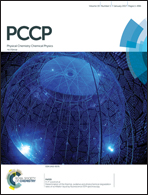Improving the charge carrier transport of organic solar cells by incorporating a deep energy level molecule
Abstract
Tetrafluoro-tetracyanoquinodimethane (F4-TCNQ), a strong molecular acceptor, has been proved to be an excellent candidate to achieve the p-type doping effect. When F4-TCNQ is incorporated into a poly(3-hexylthiophene) (P3HT): indene-C60 bisadduct (ICBA) active layer, superior behavior upon inducing polymer donor excited electron transport is demonstrated due to the addition of a deep-lying lowest unoccupied molecular orbital (LUMO) from F4-TCNQ, leading to the realization of organic solar cells (OSCs) with an improved power conversion efficiency (PCE) of 5.83%, accounting for 29.6% enhancement. In the system of active layer, the low LUMO of F4-TCNQ can easily accept electrons, remarkably reducing electron/hole recombination, which contributes to the enhancement of the photoconductivity and charge carrier mobility, resulting in higher short-circuit current density (Jsc), and achieving a more balanced charge carrier transport, as well as an ideal fill factor (FF).


 Please wait while we load your content...
Please wait while we load your content...